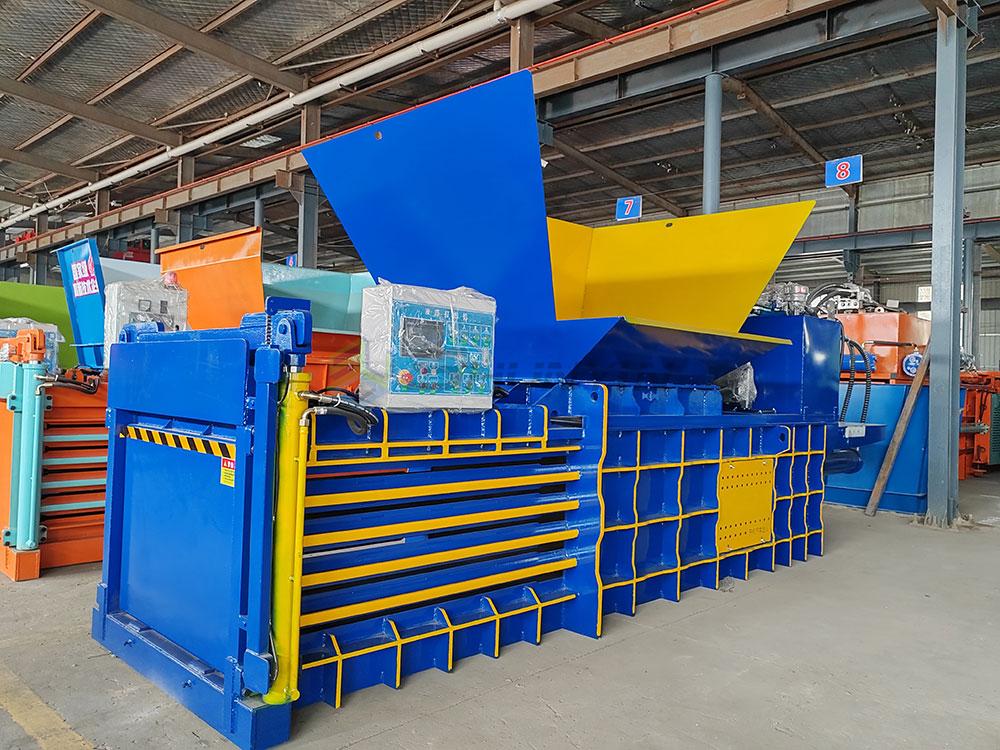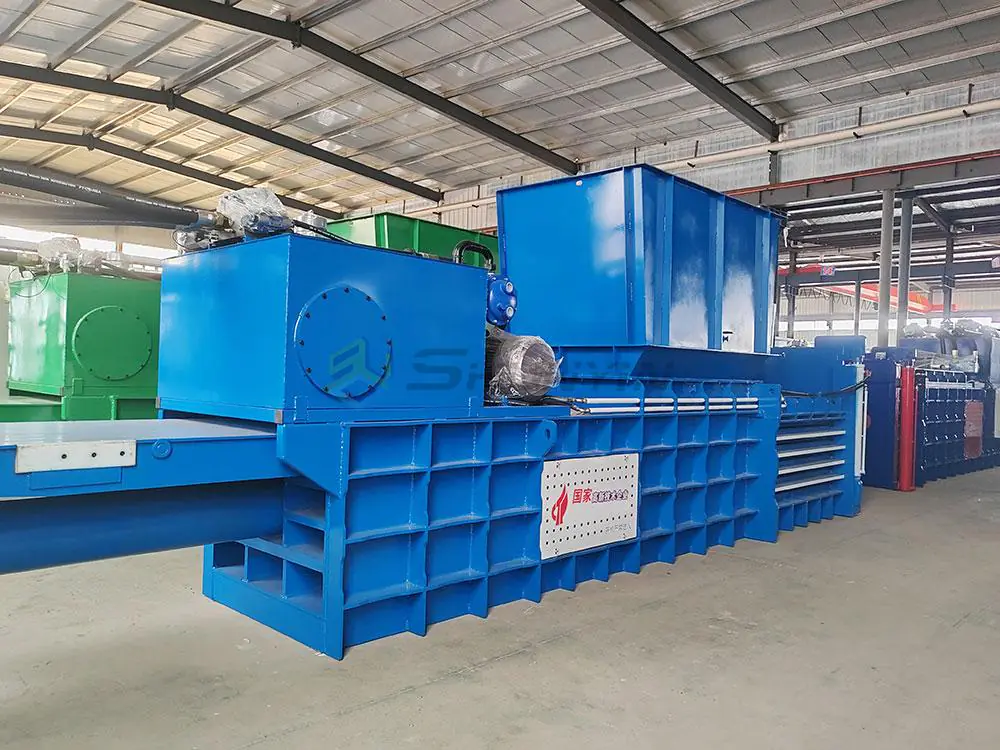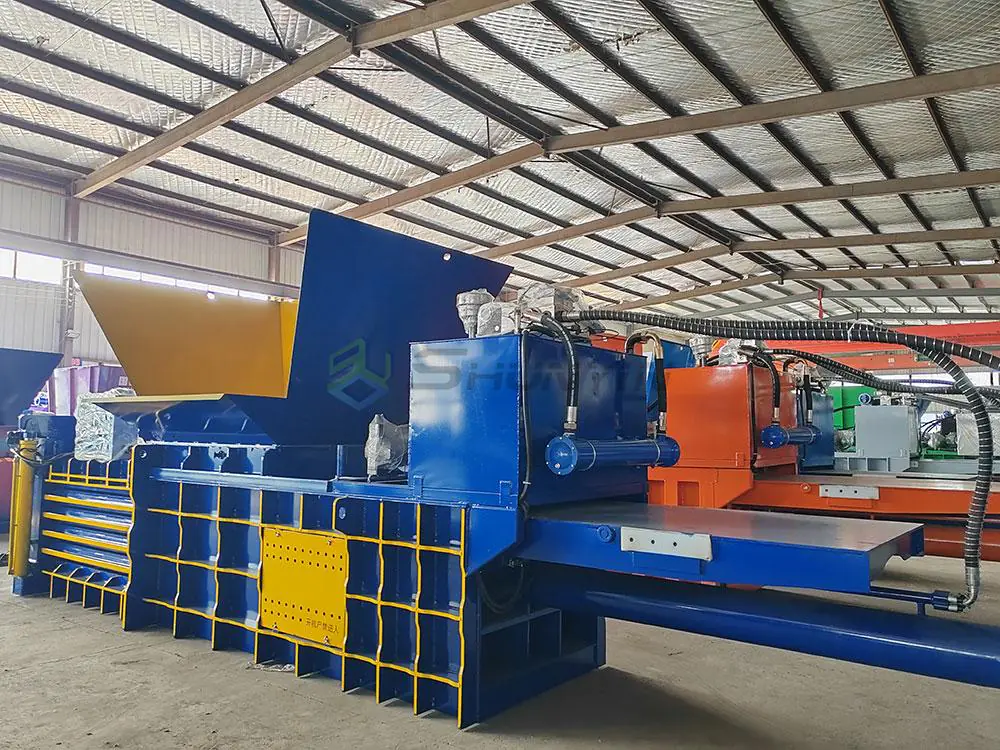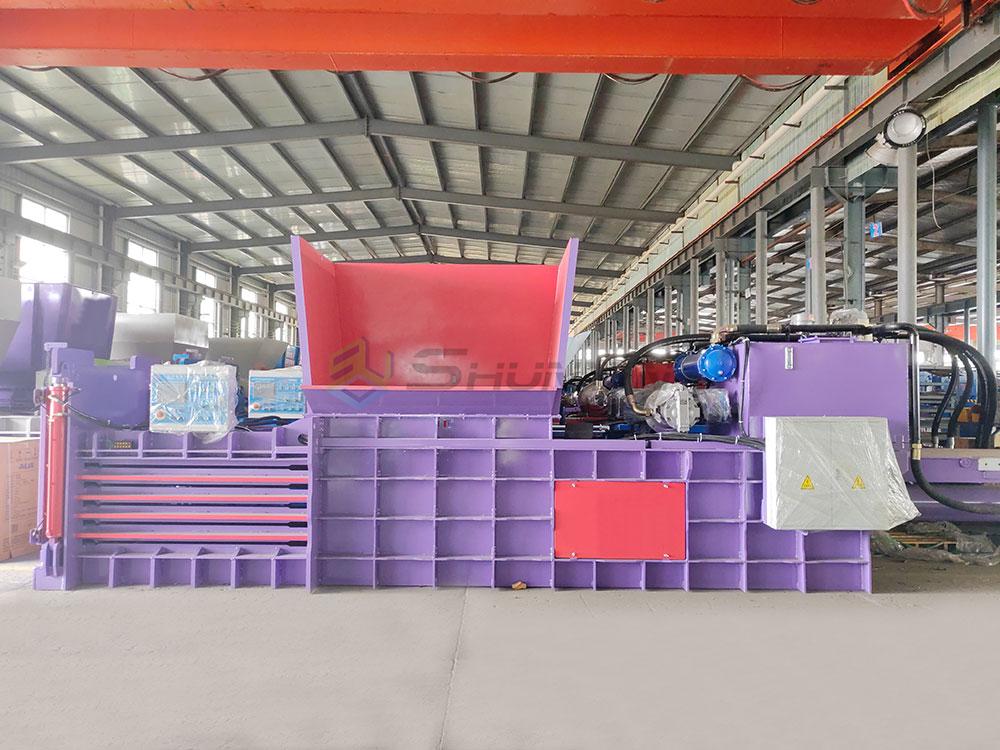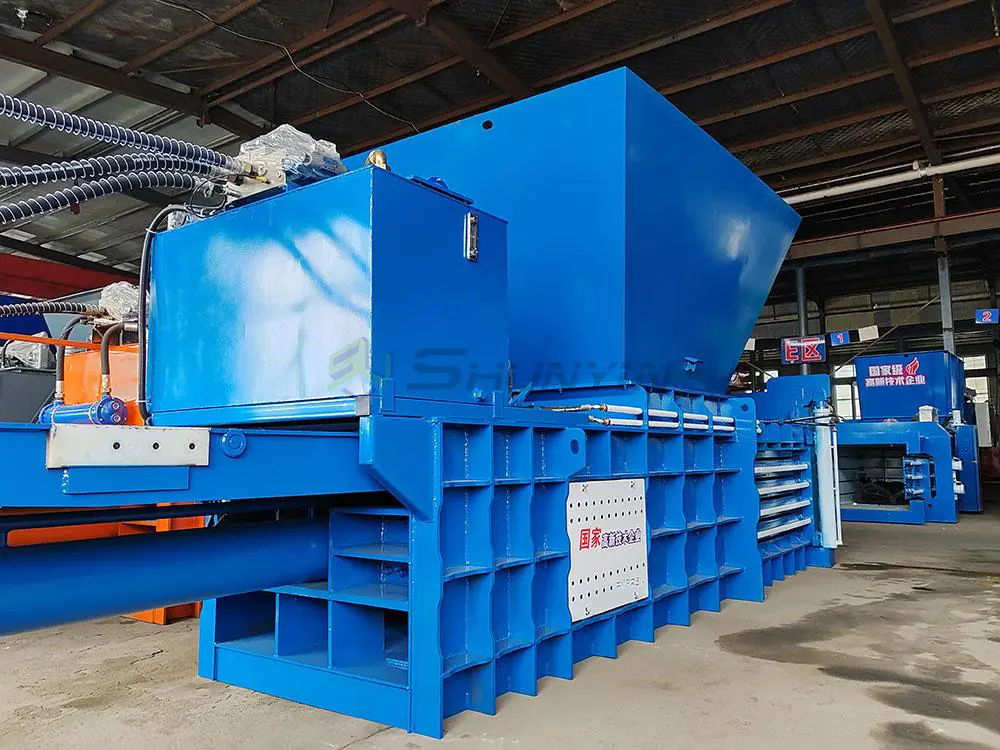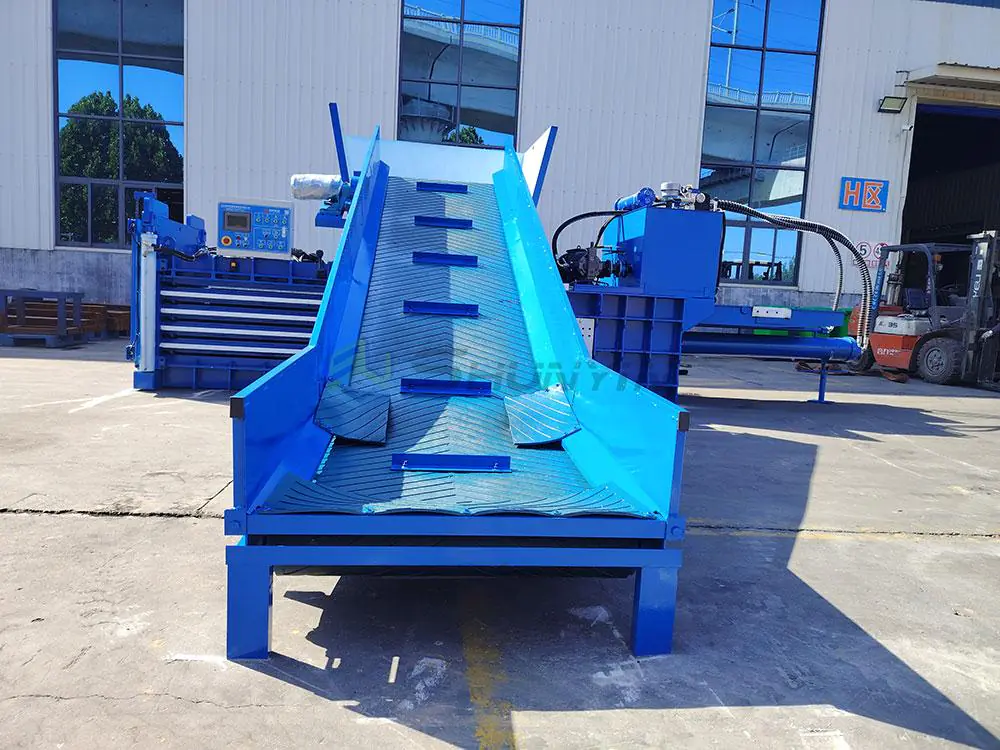Waste management costs drain profits when done manually. Daily inefficiencies frustrate operators and cut recycling revenue.
Automatic balers compress waste continuously using sensors and programmable cycles, replacing labor-intensive processes to achieve higher output with lower operating costs—revolutionizing material recovery facilities.
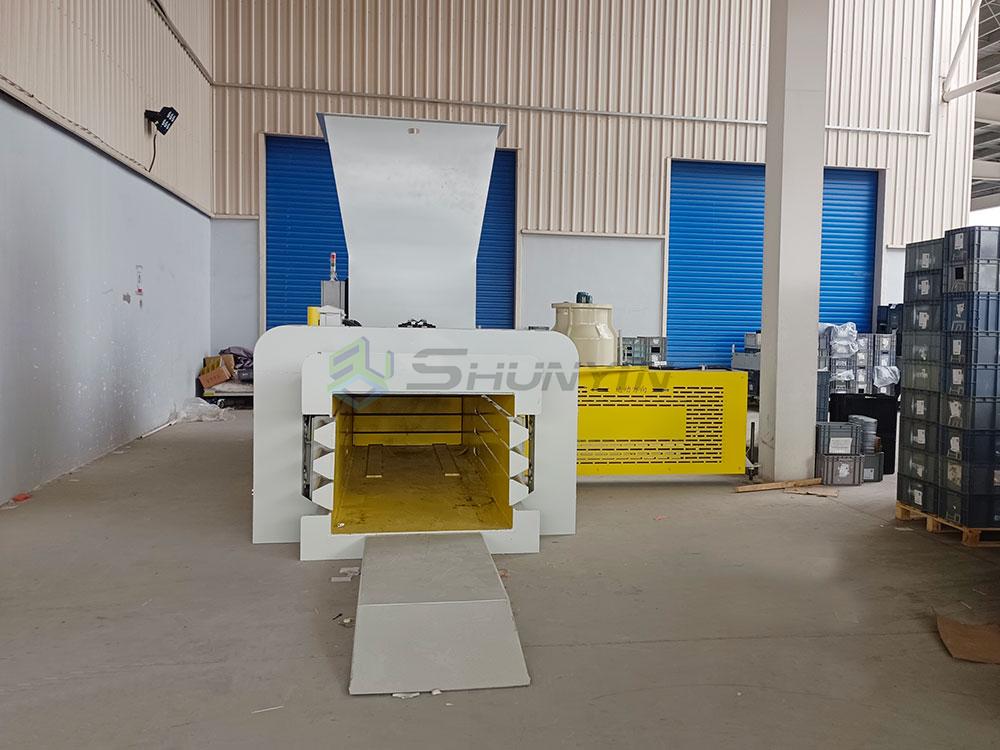
Last month, I helped a recycling plant manager cut processing time by 40% through automation. Discover how these machines transform waste handling below.
What Core Problem Does a Baler Solve in Modern Recycling?
Operations without compactors waste space and logistics money. Loose materials require frequent hauling.
Baling machines compress recyclables like cardboard into dense blocks, reducing volume by 90% to minimize storage space, lower transport costs, and create sellable commodity bales for profit generation.
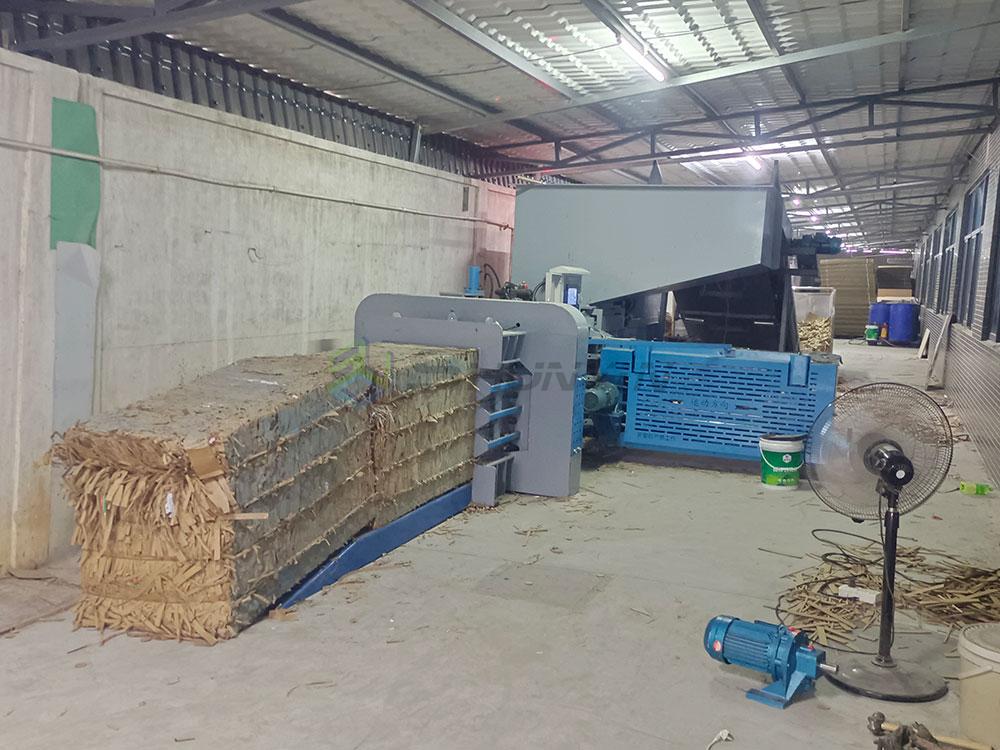
A Singapore client earned back his equipment investment in 8 months through bale sales. Let’s examine the baling value chain.
Three-Stage Value Creation in Recycling
- Input Optimization
Material infeed systems with sensors prevent jams – our photo-eyes detect metal contaminants -
Compression Efficiency
Density directly impacts resale value:Material Unbaled Volume Baled Volume Resale Premium Cardboard 100m³ 8m³ +12% PET Bottles 100m³ 5m³ +18% - Output Standardization
Auto-tie systems create uniformly sized bales for easier stacking
Maintenance Impacts on Profit Margins
Hydraulic fluid quality affects cycle times. We equip balers with contamination sensors that alert when particulate levels exceed 15ppm—critical for 24/7 operations. Clients using our monitoring kits reduce unplanned downtime by 70%.
How Do Automated Systems Transform Waste Management?
Manual sorting facilities face costly bottlenecks during peak hours. Human error escalates contamination rates.
Automated waste systems combine balers with AI sorting, conveyor networks, and real-time analytics to process 400% more material per shift while hitting <0.5% contamination targets required by premium buyers.

At our Shanghai plant, IoT-enabled balers adjust pressure based on material density scans. Here’s why automation wins.
Key Components in Robotic Recycling Lines
- Infrared Sorters: Identify material types before baling
- Auto-Preset Rams: Adjust pressure for cardboard vs plastic
- Yield Dashboards: Track bale weights and purity in real-time
Impact on Operational Metrics
| Metric | Manual System | Automated System | Improvement |
|---|---|---|---|
| Hourly Output | 1.5 tons | 6 tons | 300% |
| Labor Hours/Ton | 3 hours | 0.75 hours | 275% |
| Contamination Rate | 5-8% | 0.2-0.5% | 40x |
After installing weight sensors, one Canadian facility reduced giveaway losses by $12,000 monthly. Always request DEMO videos to verify throughput claims.
What Critical Functions Do Balers Perform Beyond Compression?
Older machines make dangerous tradeoffs between speed and bale integrity. Poorly bound bales crumble during transport.
Modern balers deliver six core functions: volume reduction, dust suppression, moisture control, safety interlocking, automatic tying, and data logging—each calibrated for recyclable-specific properties.
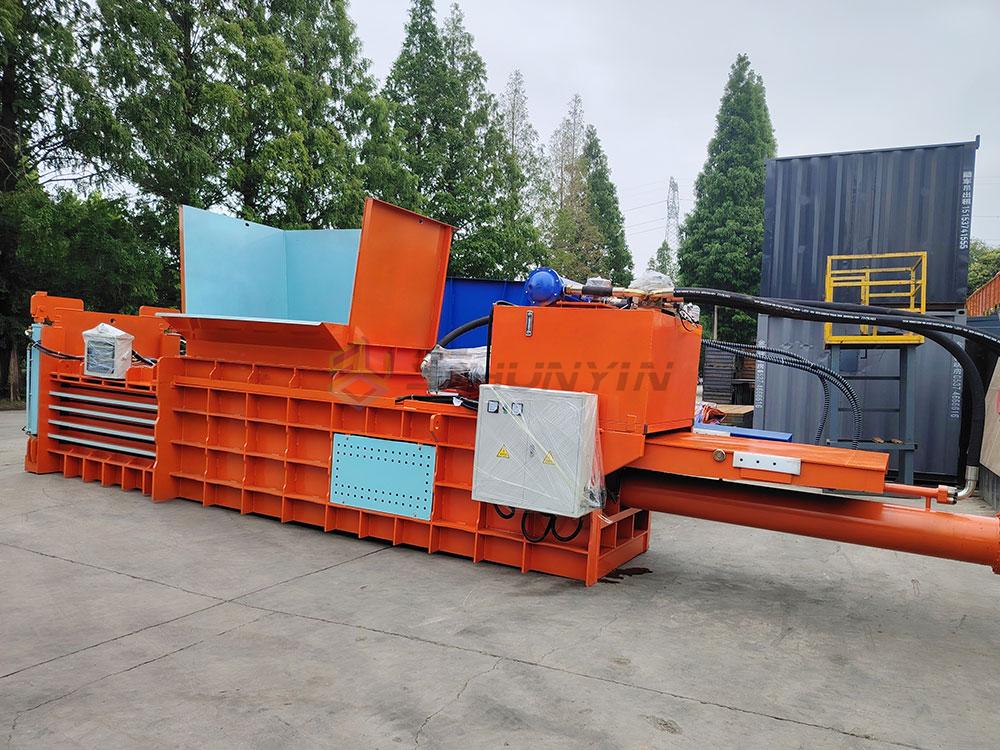
I recently upgraded a client’s system to prevent cardboard mildew during humid months. Material science defines our designs.
Material-Specific Engineering Considerations
For cardboard baling:
- Double-Wall Compression: Requires 50% higher psi than single-layer
- Humidity Sensors: Trigger air-curtains when moisture >14%
- Lubrication Systems: Prevent adhesive buildup from tapes
For plastic recycling:
- Anti-Static Systems: Essential for preventing film clinging
- Thermal Monitoring: Stop when chamber exceeds 60°C
Why Certification Matters
Fraudulent CE marks plague the industry. Always verify through third-party portals—we provide authentic certificates with QR traceability at every shipment.
How Does Baling Maximize Recycling Profit Margins?
Unprocessed recyclables have limited resale markets. Contaminated loads force disposal fees instead of revenue.
Baling creates standardized commodity units that attract premium pricing, enable bulk export opportunities, and transform waste expenses into profit centers—especially for cardboard in North American markets.

A Michigan client increased cardboard income by 23% after switching to our 120-ton horizontal model. Understand the profit mechanics.
Revenue vs Cost Factors
| Profit Driver | Non-Baled Scenario | Baled Scenario | Value Gain |
|---|---|---|---|
| Transport Cost/Ton | $75 | $30 | 60% lower |
| Selling Price/Ton | $55 (loose) | $110 (baled) | 100% higher |
| Storage Days | 7 max | 45+ | 84% longer |
Critical Export Standards
- ISPM-15 wood certification for pallets
- ISO 14001 environmental compliance
- Metal-free proof documents
We include full compliance kits with each baler to avoid customs rejections.
Conclusion
Automatic balers convert waste liabilities into profits through volume reduction and standardized commodities—start your upgrade assessment today.


